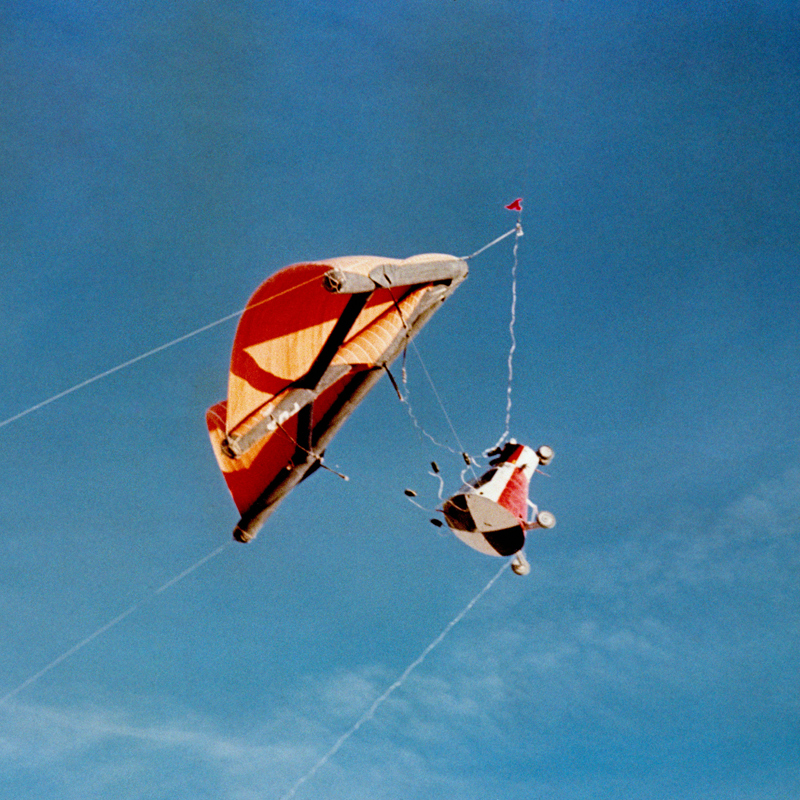The Gemini Tow Test Vehicle (TTV) was one of two vehicles made by North American Aviation for @NASA in the 1960s. It was built to help develop a way to return astronauts to a piloted runway style landing, instead of splashdown landings at sea.
NASA considered the use of Francis and Gertrude Rogallo's design for an inflatable rigid wing – The 'Rogallo wing' concept, later rebranded as the 'Parawing' was a cross between a kite and a parachute and went on to inspire the sport of hang-gliding.
This TTV, one of only two built, was flown by test pilot, Jack Swigert, who was "considered both brave and a little crazy for being willing to fly it." - the skill and bravery he showed testing the TTV led to his astronaut selection and later flight on the ill-fated Apollo 13.
Test pilots Jack Swigert and Don McCusker were awarded the American Institute of Aeronautics and Astronautics Flight Test Award in 1966, after finally proving that the Gemini Paraglider concept worked - by which time successful ocean splashdowns meant the concept was abandoned.
Rogallo’s Parawing never returned spacecraft to Earth; land-landing would have to wait until the Space Shuttle finally managed it in 1981. Fittingly, almost fifteen years since he splashed down in Gemini 10, John Young, the great advocate of landing on land, was at the controls.
Today, Jack Swigert's TTV-2 can be viewed at @spacecentre, Leicester.
TTV-1 is displayed at @airandspace Steven F. Udvar-Hazy Center in Chantilly, VA.
TTV-1 is displayed at @airandspace Steven F. Udvar-Hazy Center in Chantilly, VA.

 Read on Twitter
Read on Twitter








